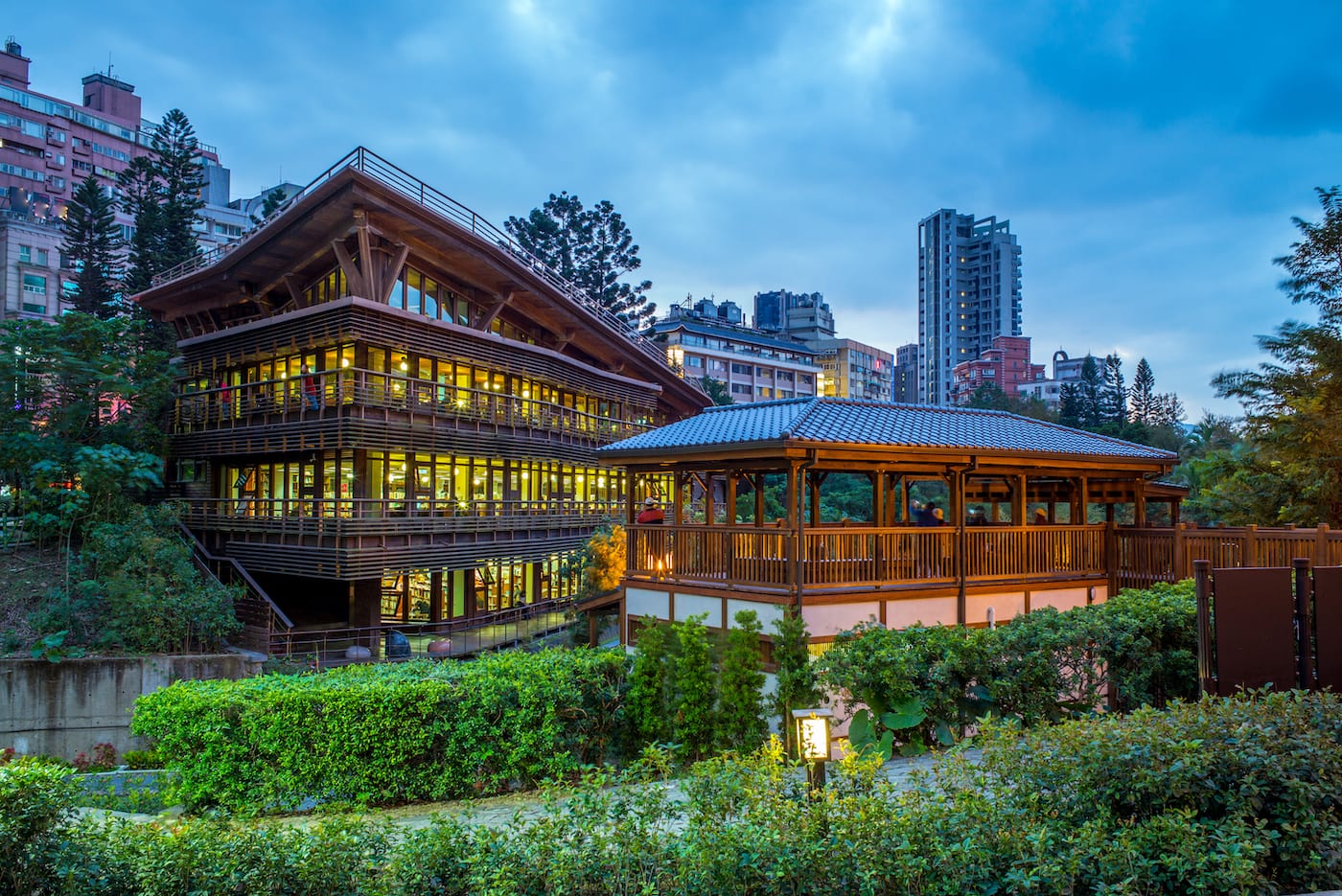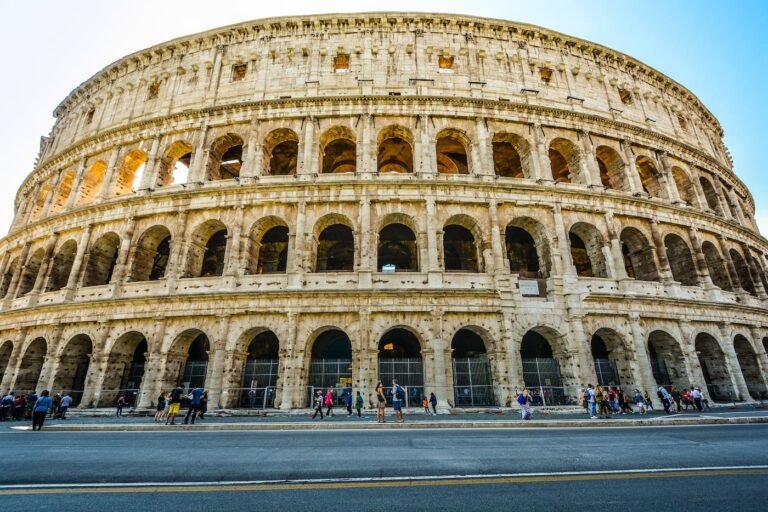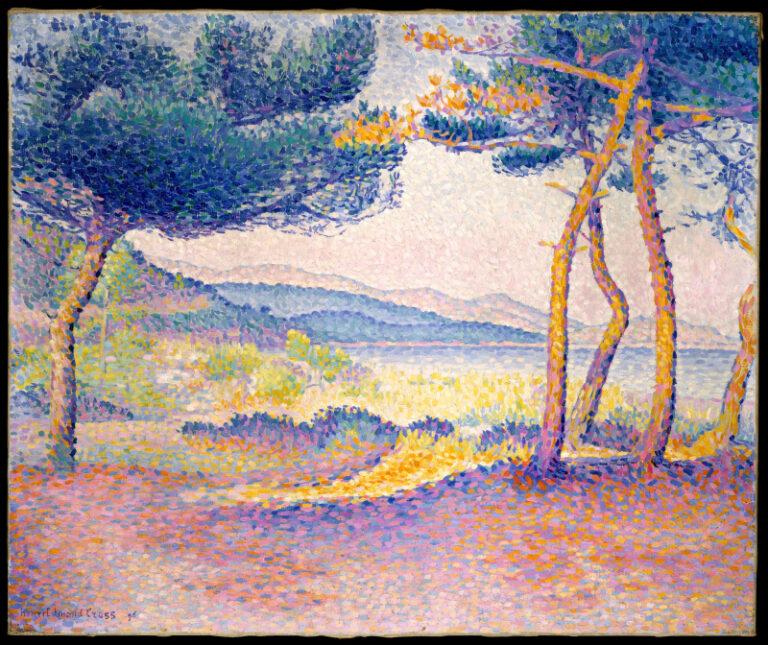New techniques and modern materials have brought on a flurry of architectural movements in the last two centuries, and are set to bring about dozens more thanks to computer advancements. Read on, and find yourself inspired and amazed by the limitless possibilities of architecture as it’s moulded into plants, towers of glass, metal skeletons and well……blobs. Here’s our list of 11 modern movements in architecture.
Want to skip ahead? No problem:
Art Nouveau
Bauhaus
Art Deco
International Style
Brutalism
Postmodernism
High Tech
Deconstructivism
Sustainable
Parametricism
Blobitecture
Art Nouveau 1890 – 1910
This movement spanned across several creative arts, from fabrics, paintings, illustrations, typography, furniture, sculpture and more. In the form of architecture it embraced the organic – a style that had become synonymous with the movement; long flowing curves, along with decorations of nature such as plants and animals. The popularity of Japanese art also influenced art nouveau, such as the expressive movements seen in Ukiyo-e prints (colourful woodblock prints and paintings from the Edo period 1615 – 1868, which showed everyday life, to scenes of entertainment).
In art nouveau a connecting design exists between the building and the ornamentation, making it seem as though it’s not hewn out of rock but the design has merely grown from it. Typically, you see asymmetrical designs, curved arches, and a merge between building materials; glass, cast iron, ceramic, steel framework, brick. The buildings are ornate, the metalwork curved to be plant-like, and often there’s a combination of colours used when painting the architecture.
The movement’s popularity stretched across Europe and America, and is recognised under different names depending on the country. For example, in Spain it’s known as Modernismo, and its most famous architect; Antoni Gaudí.
To this day Gaudí’s iconic architecture continues to attract thousands of tourists each year to Barcelona, where most of his designs can be seen. His eye-catching designs throwing architecture’s textbook into the fire and burning all its previous rules of sharp lines, symmetrical criteria and geometric features. From which he instead “grew” buildings that have soft, sinuous curves that create a sculpture of almost organic birth – with bright colours and soft abstract ornamentation merging and reaching into one another. To see it is to believe it. However, his most famous work; Sagrada Família is in fact a merging of gothic and nouveau, the latter softening the sharp spires and lines of gothic design, though this monument of architecture was completed posthumously.
Throughout art nouveau’s architectural movement there’s a strong sense of nature, with plants that form and twist both internally and externally; often becoming the building’s window-frames and doors, and in some cases the support columns.
Although short-lived in comparison to other movements within architecture, art nouveau has become increasingly admired with time.
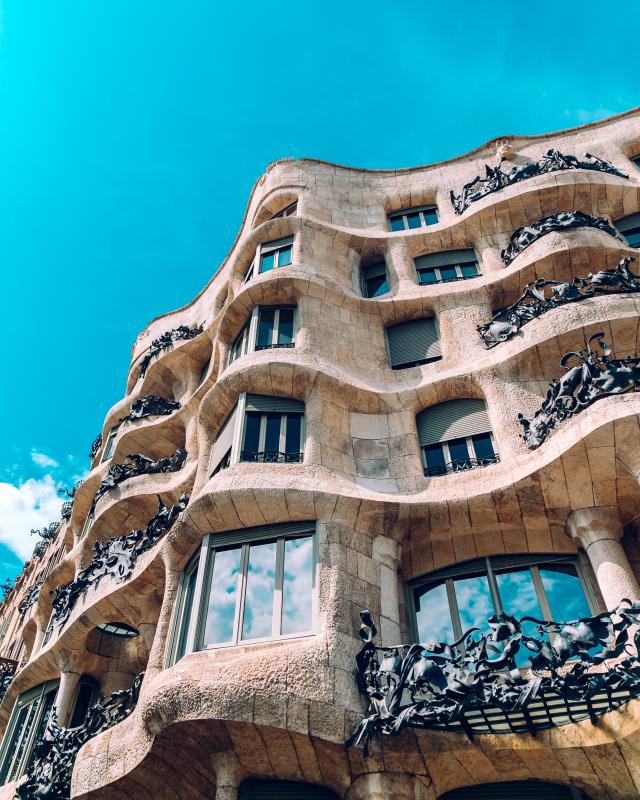
Casa Mila (Barcelona, Spain). Image is courtesy of Florencia Potter (Unsplash)
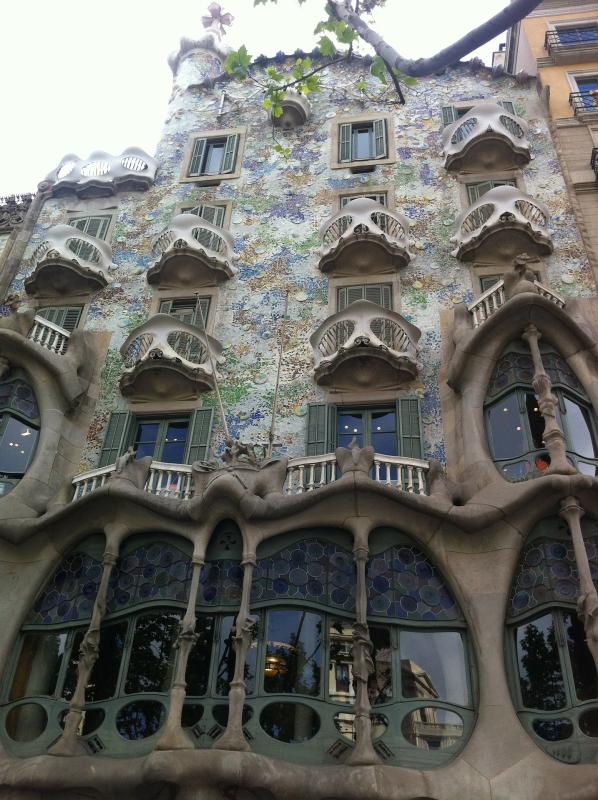
Casa Battló (Barcelona, Spain). Image is courtesy of pblotlefevre from Pixabay
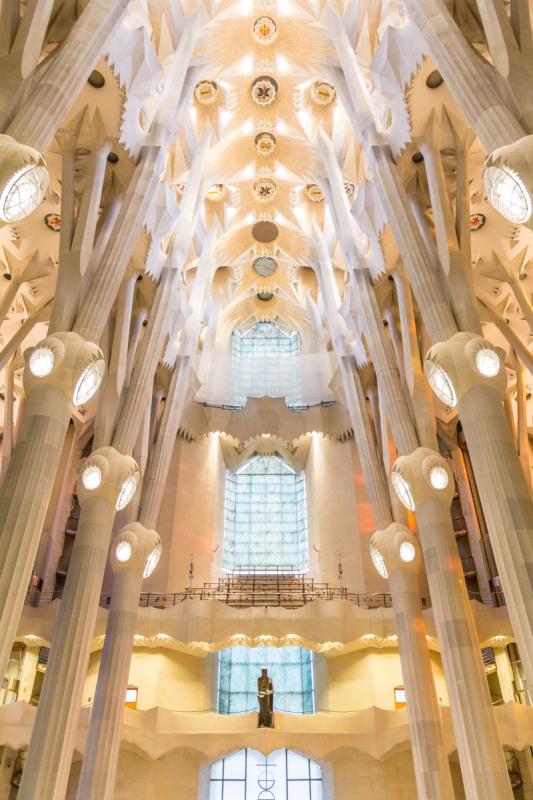
Sagrada Família (Barcelona, Spain). Image is courtesy of Won Young Park (Unsplash)
Bauhaus 1919 – 1930
Largely, modern architecture is viewed to have grown from the 1910s, following demand for more functional buildings. As such it scrapped ornate decorations and the neoclassical approach – which had previously been popular – and instead embraced technological advancements such as reinforced concrete and curtain walls (i.e. structural non-bearing walls).
From this increase in practical buildings with a more minimalist style, came Bauhaus; a movement named after the Bauhaus school founded by Walter Gropius in which to study and practice architecture through its interconnected relationship to arts, crafts and design. Teaching them all together as a working unity.
Turning away from previous architecture, especially the revival or recycling of old styles, Bauhaus set about producing highly usable builds with the modern materials of the day; glass, concrete and metalwork. Its designs were geometric and sometimes lacked a point of hierarchy, they were also plain in appearance with flat roofs and walls of little colour.
Sadly, the Bauhaus School only lasted for a short period, due to the criticism of its teachings, but thankfully it has continued to have a lasting influence in today’s architecture.
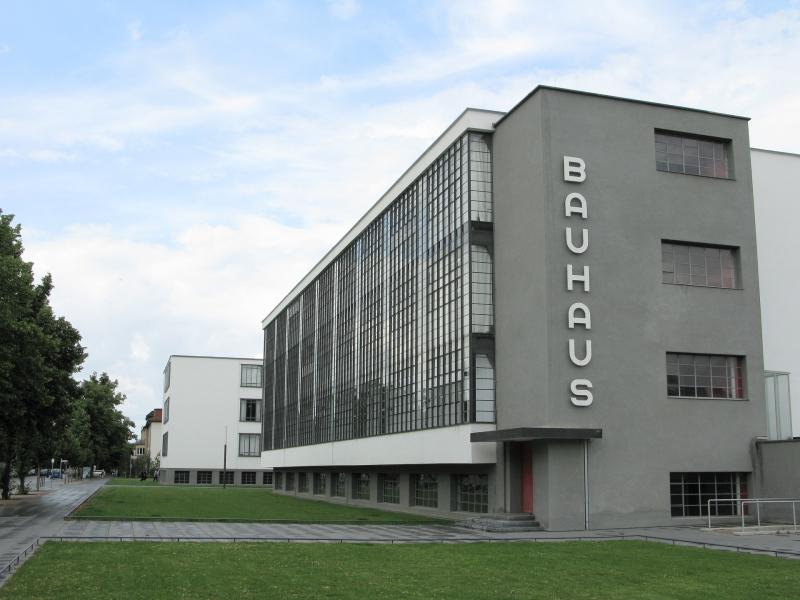
Bauhaus School (Dessau, Germany). Image is courtesy of Moonglow from Pixabay

Bauhaus School (Dessau, Germany) (Panorama). Image is courtesy of alicia1 from Pixabay
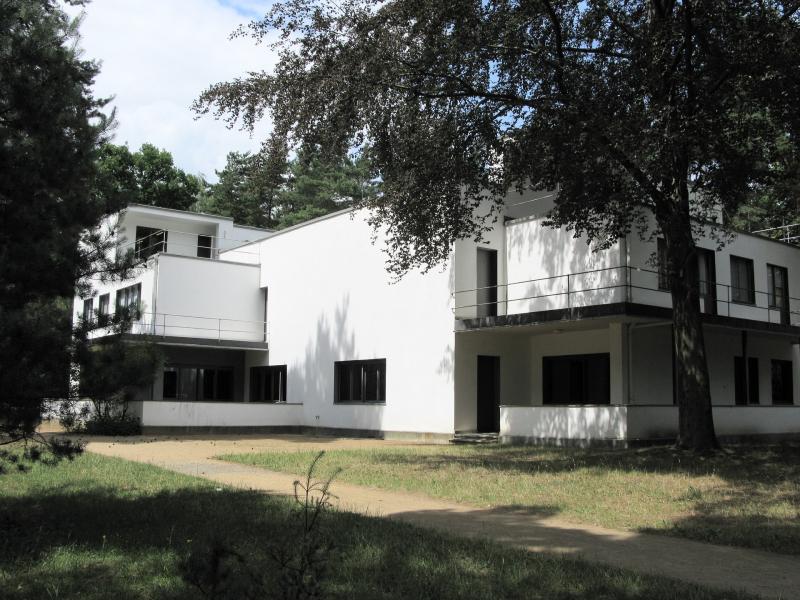
Kandinsky-Klee House (Dessau, Germany). Image is courtesy of Moonglow from Pixabay
Art Deco 1925 – 1939
With more than a little flair, the art deco period said ‘I want it all, and more’ taking its inspirations from the past and the modern society of the day. Producing works from great big skyscrapers of steel and glass, that were influenced by the age of machine, to brightly coloured buildings with horizontal lines, zigzags and overlapping shapes of geometrics and pyramids. It also looked to the Aztecs, Classical, Islamic and Egyptian architecture (to name just a few). Combining them all into alluring public spaces, many of which can be seen today. But these designs were not limited just to the wealthy, or to the world of entertainment, but included places of works such as factories.
Art deco features can be seen worldwide from Shanghai, Cape Town, Mexico, Indonesia and many more. Some of the most famous areas being the district of Miami Beach (US) to a whole town in New Zealand called Napier with its high ratio of art deco architecture.
The buildings of this time also made full use of lighting – from spotlights, strips, to neon signs that accentuated the lines of the building and their dramatic impact – this can be most clearly seen in the buildings designed for entertainment.
Art deco’s streamline appearance highlighted the building’s shapes – showing a design of rectangles, lines and curves, while the use of block colour drew the public’s eye and kept it. But not all art deco is infused with colour, with other designs taking a more simplistic approach; little colour and simple curves that met straight lines. Its later style echoing forward with more modern designs.
The art deco movement was so impactful, that it affected whole genres of art, not just architecture, but crafts, design, furniture, clothing, cars and fine arts.

Chrysler Building (New York, US). Image is courtesy of Dan Smedley (Unsplash)

Breakwater Hotel South Beach (Miami Beach, US). Image is courtesy of Wes Lewis (Unsplash)
International Style 1922 – 1971
At a time of social change, international style sought not to be an object of luxurious wealth and opulence, but a form of practical use.
Stripping everything back, its main design features were its materials; glass and steel. It didn’t follow any strict rules of symmetry, but instead looked at; geometric forms, typically flat roofs, a linear motion of lines and open space floors –which can still be seen in many offices today. In fact, most skyscrapers are in the international style of ultra-minimalism.
The invention and application of steel-reinforced concrete meant that the heavier stonework of the past could be left behind, in exchange for something lighter. As such there is more emphasis on glass and steel – with them acting as a curtain wall to the concrete reinforcement that’s hidden away.
The international style was influenced by architects wanting a simpler style to the variety of architecture before. Combined with the economic changes and technological developments, the style became adopted around the world. However, by the 70s people became disenchanted and felt the designs were too plain and predictable.
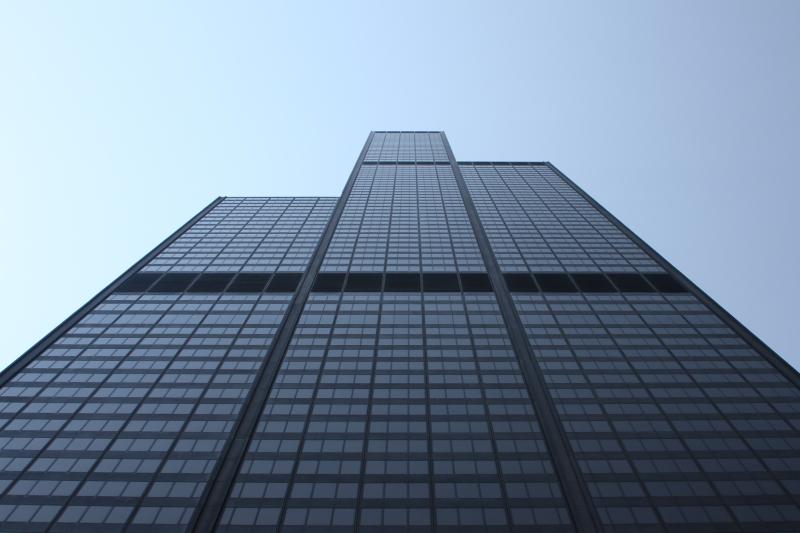
Willis Tower (Chicago, US) (close-up). Image is courtesy of Noel Forte (Unsplash)
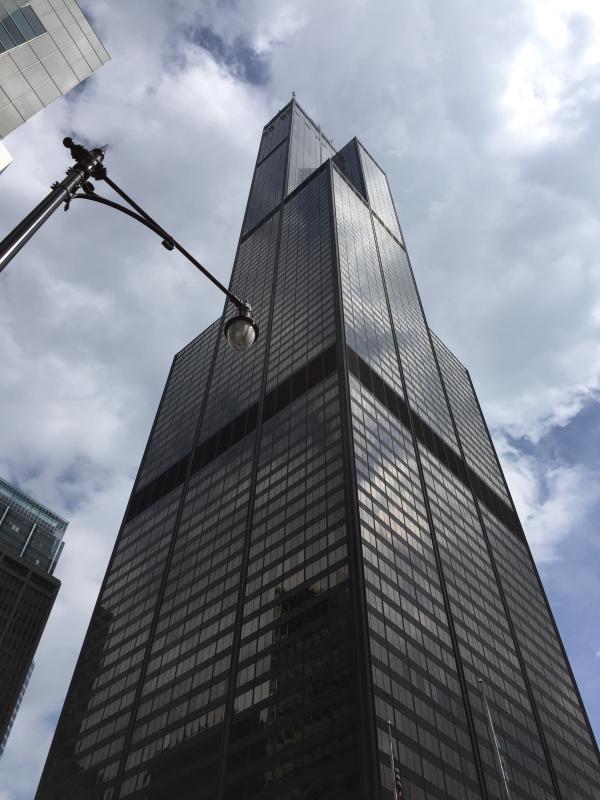
Willis Tower (Chicago, US). Image is courtesy of Guido Coppa (Unsplash)
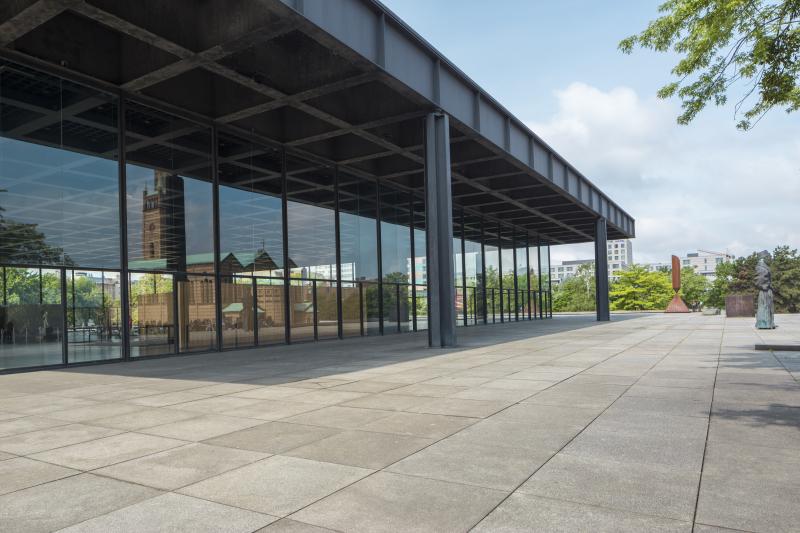
New National Gallery (Berlin, Germany). Mikolaj Niemczewski/Shutterstock.com
Brutalism 1950 – 1980
Brutalism is a showcase in the versatility of concrete in construction. The styles, though heavy and durable, are eclectic in their formation. Its architectural designs seen as a revolt against the steel glass builds of modernism, in particular the international style.
Unadorned, the decoration is the building’s sculpture; which in brutalism is different textural concrete; from rough to smooth surfaces, while its appliance led to the experimenting of unique shapes. The brutalist movement, although originating in Britain, can be found all over the world, from shopping centres, housing, bus stations, car parks, government and public buildings, to even universities such as Turkey’s Middle East Technical University. However, its overall bulkier frame has left it to be one of the more unpopular movements, and to have the name itself confused with being “brutal”. When in fact ‘brutalism’ originates from the French “beton brut” meaning raw concrete.
Despite being unpopular at the time (it’s gained more favour in recent years) many buildings between the 50s and 70s were built in the brutalist style. This was due to the quick speed of its build and economic affordability. A typical example of brutalism is its large housing complexes such as apartments. The ideals of the movement being to unite people through social interaction; with terraces that connected apartments, and courtyards to interact and mingle.
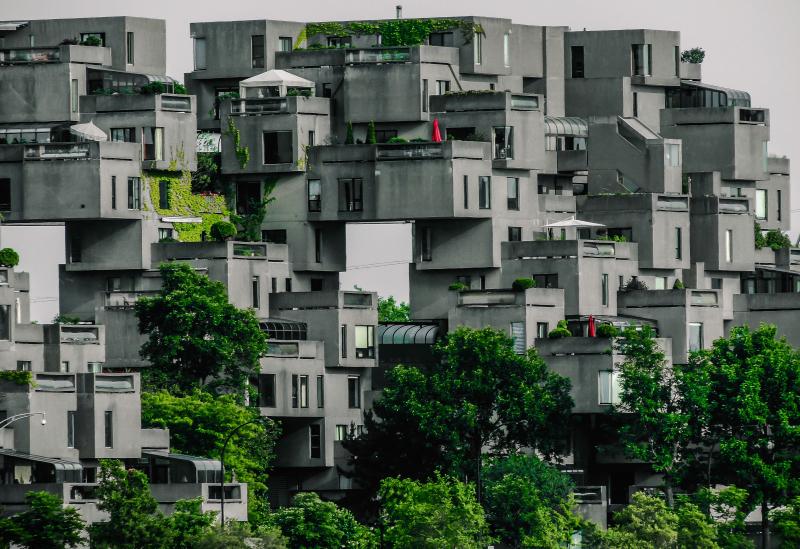
Habitat 67 (Montréal, Canada). Image is courtesy of Philippe Collard (Unsplash)
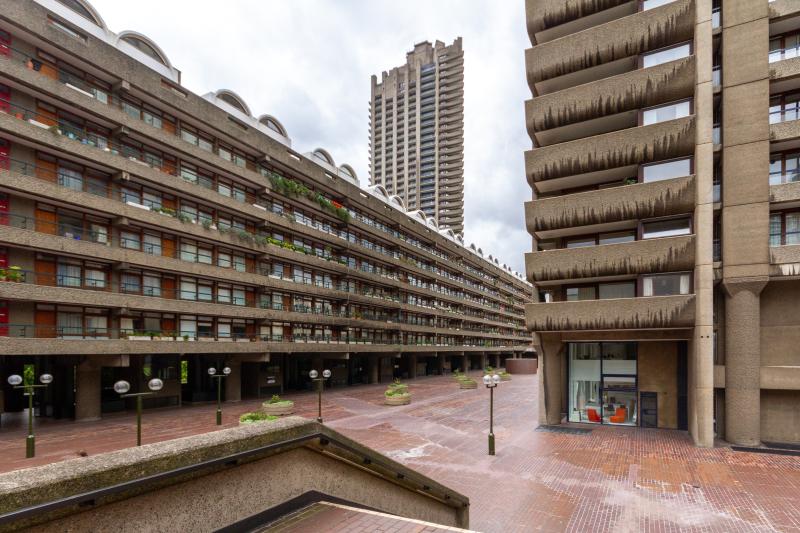
The Barbican (London, UK). Image is courtesy of Dimitry Anikin (Unsplash)
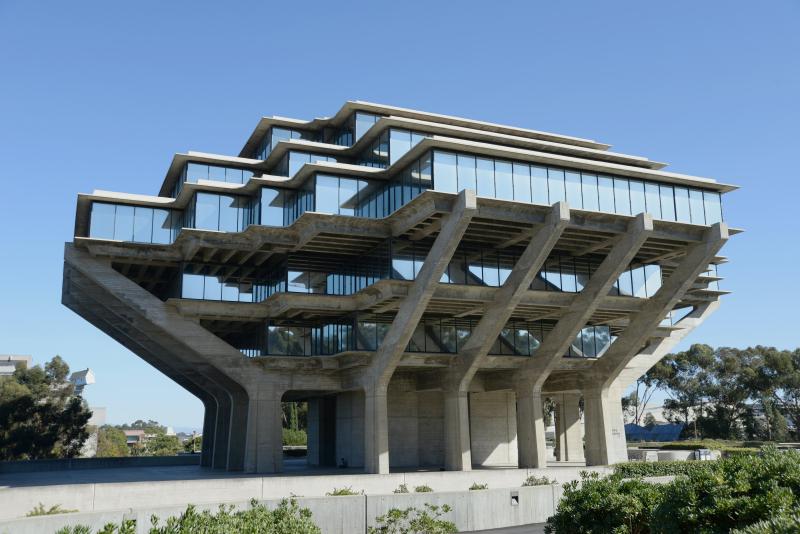
Geisel Library Building (San Diego, US). Image is courtesy of Laura Ockel (Unsplash)
Postmodernism 1972 – 2010
The only limitation is the imagination, and from the 1970s postmodernism reacted against the structurally plain and unadorned buildings of Modernism and the international style, with its powerful imagination, showing just what it could do. The style does however take from modernism, but it also takes from a range of earlier movements, before putting them all together in a blender to spew out new designs that really do merge, or to contrast them boldly against one another. For example; the use of plain columns (Doric) as the frames to huge glass sheets; pyramid inspired apartments; buildings that look like abstract art; to a collection of different shapes that have been placed together.
Postmodernism has its inspirations and footholds in a range of artistic movements from Cubism, Dadaism, Symbolism, to the abstract, which it then mixes with several international styles in architecture. The best way to describe postmodernism is to think of someone having several different jigsaws and placing the different pieces together – some may fit to complete a whole image, while others shout and steal attention from one another. When colour is added into the mix it’s often bright, and clashing.
Features of postmodernism can be described as complex but expressive. There are comprehensive images such as binoculars (M2 Building, Tokyo, Japan) or a building torn in two; an amalgamation of inspirations across art and architecture, including the classical; simple designs that are layered upon one another; turned upside down; to being stretched and distorted in asymmetry. In summary it’s playful, bright and in order to create – uses a variety of materials and styles.
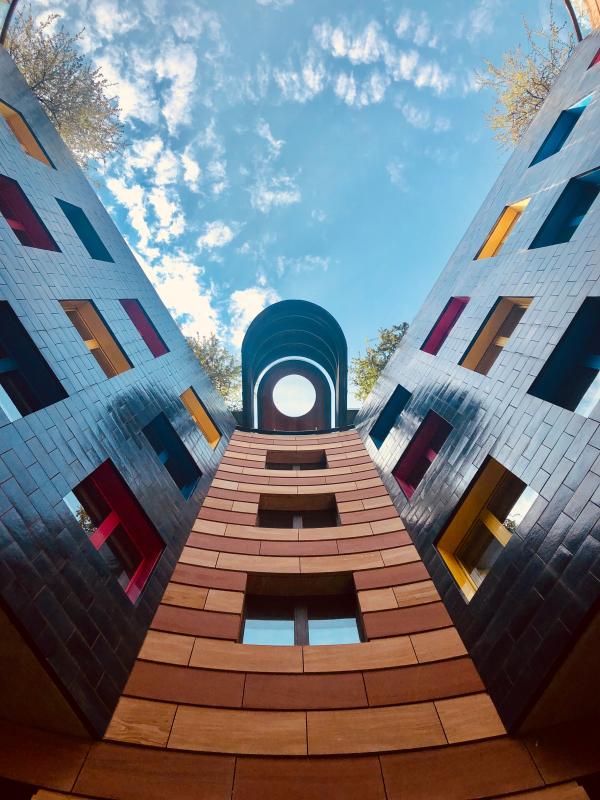
No. 1 Poultry Building (London, UK). Image is courtesy of Hency Parmar-Soni (Unsplash)
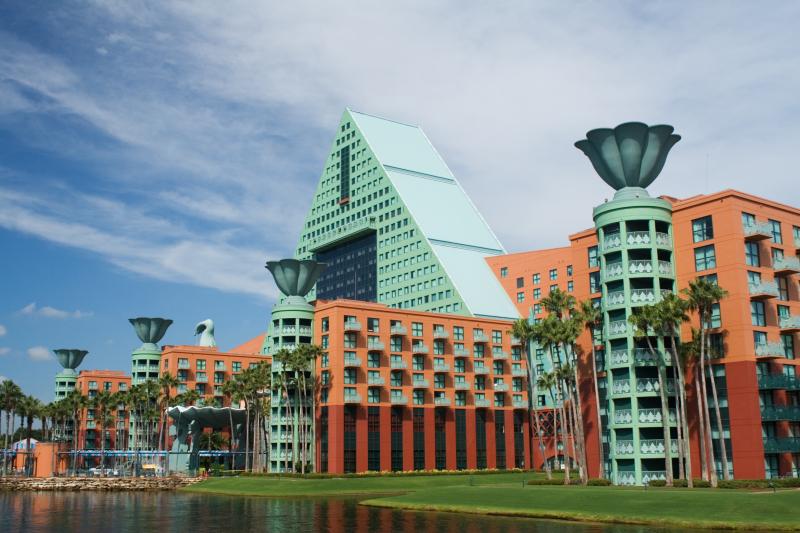
Swan and Dolphin Hotel (Orlando, US). Daniel Padavona/Shutterstock.com
High Tech 1970 (also known as Structural Expressionism)
Here the skeleton and working muscles of the building are on full display; wrapping its exterior with pipes, lifts, air ducts, heating, drainage, support structure etc. Effectively the architecture is inside-out in celebration of engineering and construction.
In highlighting the essential qualities of the building its different components are often coloured to make them stand out from the each other, and from the block frame of construction. The interior is largely glass, and can in some cases be moved to make different partitions.
Material is usually metalwork, in particular steel, and is often combined with glass, giving the architecture a lightweight style in composition.
Examples of high tech architecture can be seen from conference centres, large corporate buildings, airports, and museums etc, whilst also being found around the world; Hong Kong, Germany, America etc, but in particular many examples can be seen in the UK.
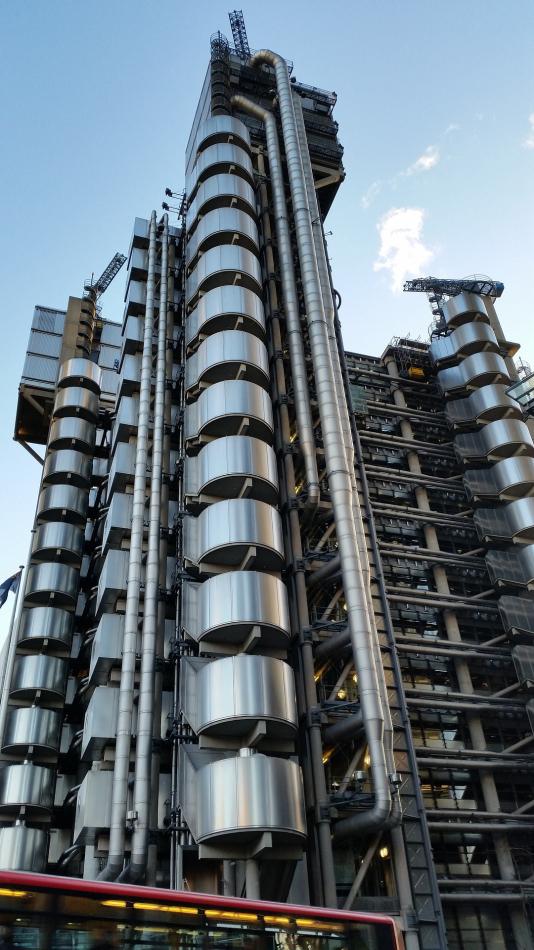
Lloyd’s Building (London, UK). Image is courtesy of Bernard Kudulis from Pixabay
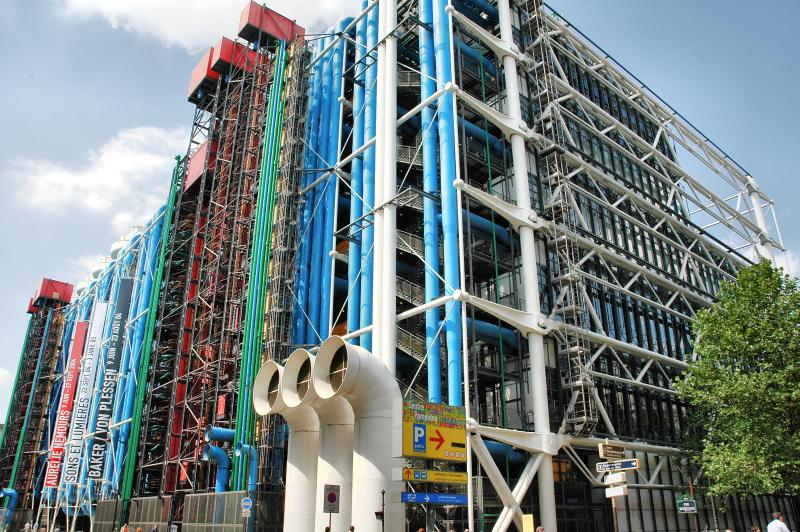
The Centre Pompidou (Paris, France). Jorge Felix Costa/Shutterstock.com
Deconstructivism 1980
Formed of two ideas, it deconstructs; analyses the architectural rules to date, reassembling and contorting them even. And constructivism; an architectural movement in 1920s-30s Russia that investigated contrasting elements of a build, both stylistically (between different shapes, lines, and curves), and in materials (glass and steel – often exposing their relationship).
Deconstructivism is often reduced to just one word; fragmented, the buildings appearing to twist and deform from their original shape, and into components that pull away from each other. Another feature can be the distortion of the building’s surface as if the skin itself is rippling like a wave on a pond.
Irregular in design, the builds of deconstructivism are still functional, and yet, many architects shy away from describing their work as belonging to this movement. Even the architect most commonly associated with deconstructivism; Frank Gehry – whose architectural designs are simply breath-taking, especially the Guggenheim Museum in Spain – hasn’t referred to his work as deconstructivism. But industry leaders, the media and critics have defined his work as a pinnacle example.
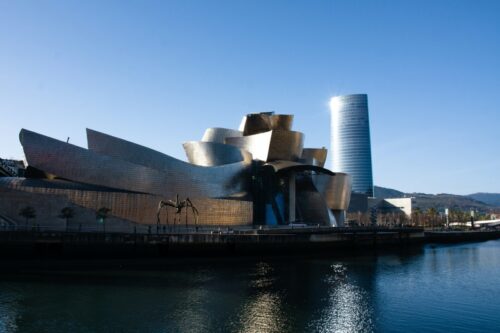
Guggenheim Museum Bilbao (Bilbao, Spain). Image is courtesy of Antonio Gabola (Unsplash)
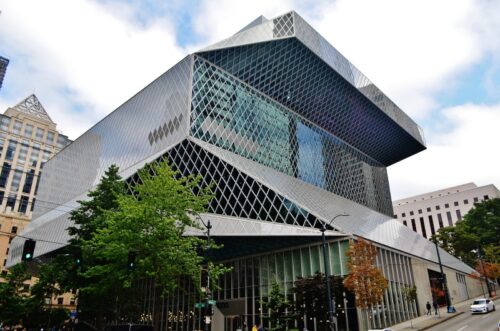
Seattle Central Library (Seattle, US). Image is courtesy of Abhay Bharadwaj from Pixabay
Sustainable 1980 –
In a world where we’re becoming increasingly aware of the damage caused by our commercial waste, deforestation and carbon footprints, sustainable architecture looks not to add to this, but to help combat it. It does this by reusing material and/or recycling waste into the building’s construct, so that it can be recycled once more. It also uses sustainable energy sources; such as waste for heat, and collecting rainwater etc. To constructing builds that are immersed with nature rather than against it. This latter feature might explain why it’s also known as green architecture.
In all, sustainable architecture looks to make as little impact on the environment as possible; with roof gardens and plant walls for example; natural power generators such as solar panels, geothermal, turbines etc; recycling/reusing as much as possible from the buildings’ materials; water reusage; and to preserve energy through heat insulation, or wide-opening windows for cooling etc. It also aims to improve and help people’s health. In fact, green space has been shown to have a positive effect on people’s physical and mental wellbeing.
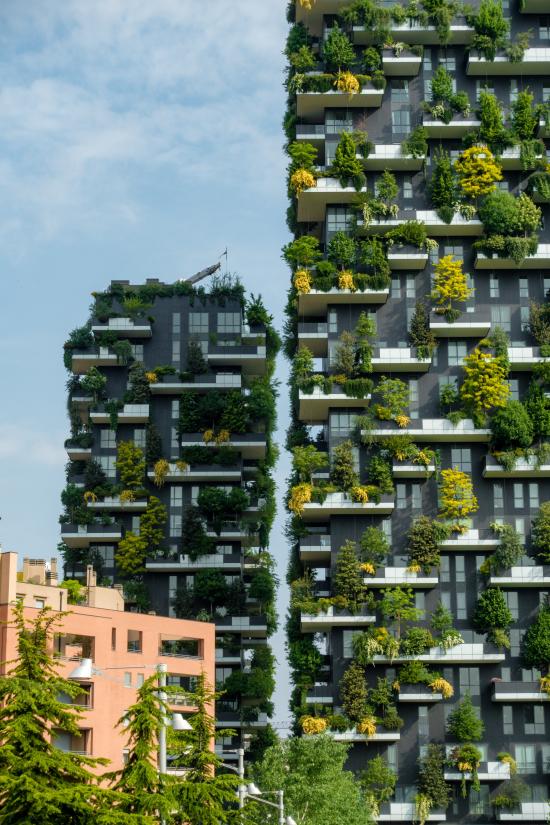
Bosco Verticale (Milan, Italy). Image is courtesy of Daniel Seßler (Unsplash)

The Taipei Public Library Beitou Branch (Taipei, Taiwan). Richie Chan/Shutterstock.com
Parametricism 1990 –
Using advanced computer technology, parametricism is the measure of buildings through algorithms; deciding their variables such as height, size, site conditions, context etc and then using this data to define the parameters of the build and leaving the computer to render the new design. This means that the computer always retains the required framework for the building, and as such will adjust accordingly e.g. shorten or widen one section, and another part of the design will alter to accommodate the change.
Parametricism is not constrained by previous architectural formats, its geometric forms are flexible and non-uniform; able to alter and change their shape into new designs, and to have areas not confined, but to work with one another.
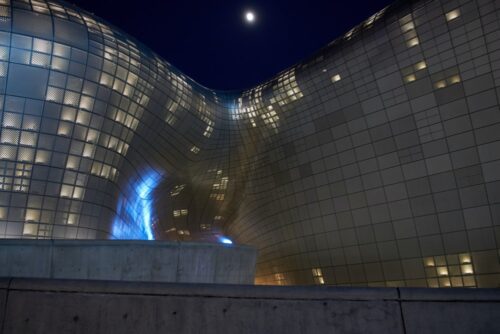
Dongdaemun Design Plaza (Seoul, South Korea). Image is courtesy of Mathew Schwartz (Unsplash)
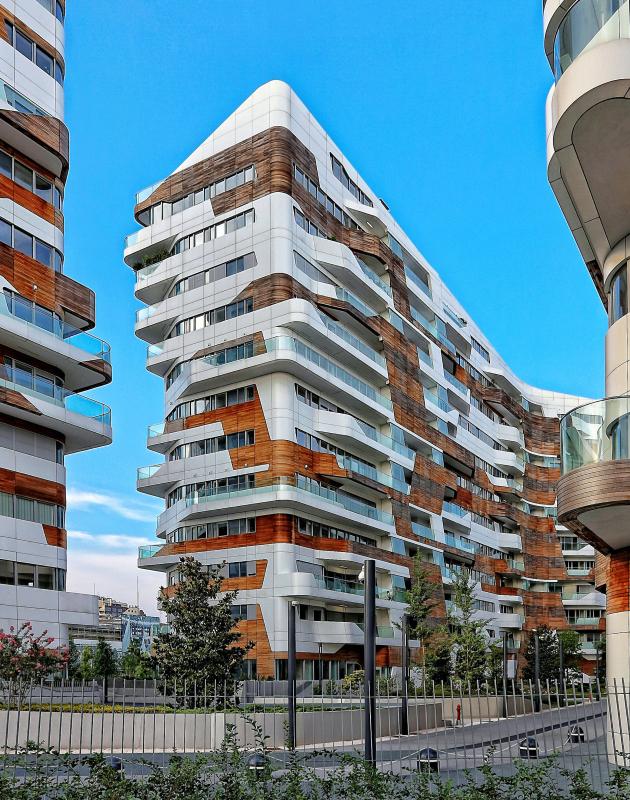
Hadid (CityLife) Residences (Milan, Italy). Image is courtesy of Ricardo Gomez Angel (Unsplash)
Blobitecture 1995
Not as vast-ranging in its impact as other movements, it’s still none the less one of the most recognisable. Its name, though originating from Binary Large Object, suits its appearance much more – that of a blob. Its organic shape and structure, helped thanks to computer-aided-design (CAD) and custom-made constructs, means it has no right angles and sharp lines, but instead appears as though its oozed into place, and is just about holding its shape.
Its appearance varies from something extra-terrestrial, amoeba-inspired, or honey-comb patches, but it’s always asymmetrical, has soft curves, and is composed of smaller intricate shapes.
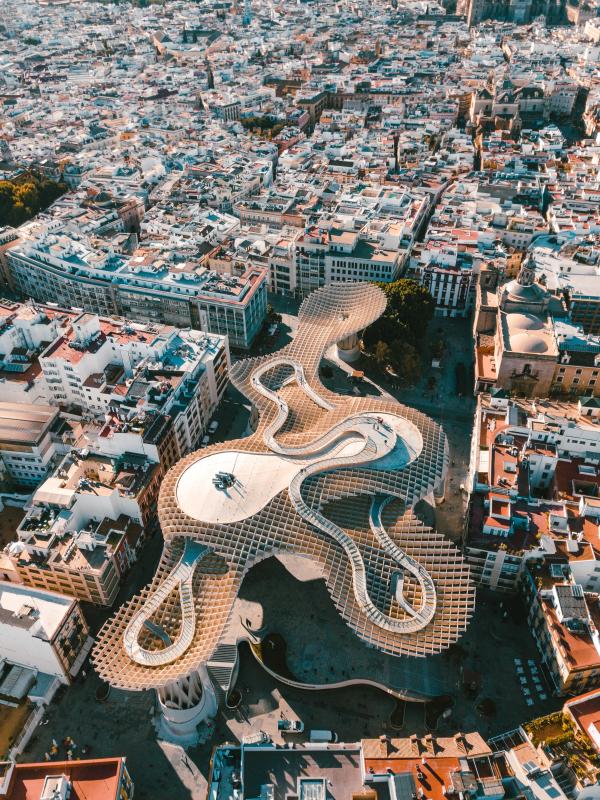
Metropol Parasol (Seville, Spain). Image is courtesy of Andrea Leopardi (Unsplash)
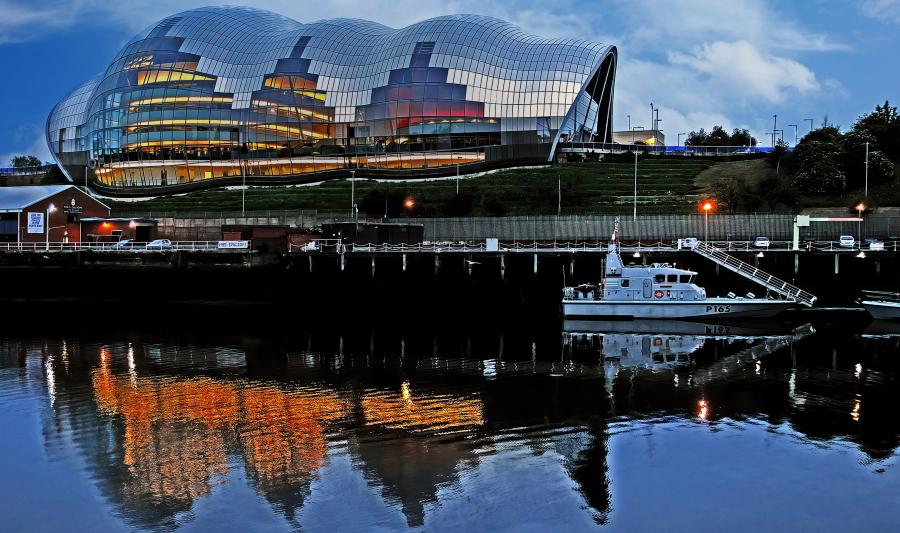
Sage Gateshead (Gateshead, UK). Image is courtesy of Andrew Buchanan (Unsplash)
These are just a few movements, chosen for their impactful approach and stunning beauty. In today’s world, architectural styles are having implications across a breadth of countries, and with increasing communications and further learnings of science, really anything is possible for the future of architecture.
Enjoyed our list of 11 modern movements in architecture? And now want more architectural articles?
Be sure to check out our 14 Architectural Styles from the Ancients to the 19th Century.
Or better yet, you’d like to share your knowledge about architecture, or maybe something else in the design world?
Wherever your passion lies, why not send us a submission?

